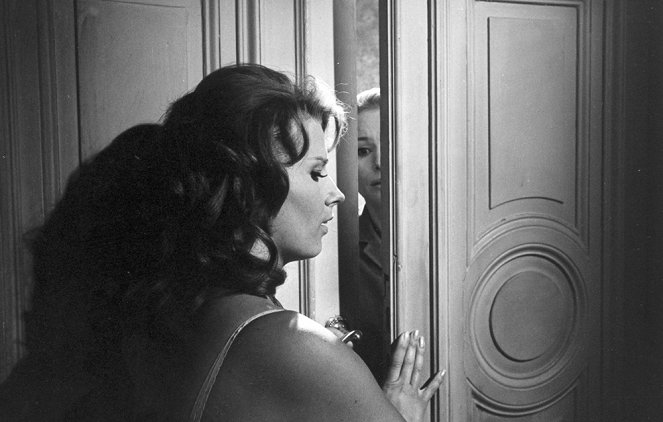Rendező:
Ingmar BergmanForgatókönyvíró:
Ingmar BergmanOperatőr:
Sven NykvistSzereplők:
Ingrid Thulin, Gunnel Lindblom, Birger Malmsten, Håkan Jahnberg, Jörgen Lindström, Eduardo Gutiérrez, Olof Widgren, Birger Lensander (több)Tartalmak(1)
Bergman talán egyik legszebb irodalmi forgatókönyve a csend, melyből poétikus filmet alkotott. A csend filmjét. Szereplői egy tízéves fiú, Johan, édesanyja Anna, s Eszter. Némán utaznak, hárman, a vonaton. Ki tudja merre és hová. Johan a párás ablakra betűket ír, édesanyja narancsot bontogat, míg Eszter szemét lehunyva pihen. Arca sápadt és elkínzott. Fullasztó köhögés rázza meg. Beteg. Eszter megnyugtatja mindkettő utasát, hogy semmi baja, s nem akar kórházba menni. A film mozgató eleme a csend. Bergman szereplői számára megteremti az átjárást az álom és a valóság küszöbein át. A trilógia befejező darabját - a rendező huszonötödik filmjét - "negatív lenyomatként" jellemezte. Mit tegyünk, milyenek vagyunk szeretet, kapcsolatok, hit nélkül, hogyan létezhetünk, ha Isten hallgat. (M5)
(több)Videók (1)
Recenziók (2)
I don't have the same fundamental problem with The Silence as I do with Persona, for example, so this is the second time I've experienced it in my life. It is quite interesting to see the parallel between Ingrid Thulin's orgasm and Machatý's work with Hedy Kiesler, thirty years earlier. The point is the same. Let’s not let this be spoiled by a somewhat more open relationship between mother and son and interpretations on the topic of "sex in the movie theater yes or no" or "one-night stand yes or no." Let each person answer this according to their own experience.
()
Pure Bergman. A symbolic story of two sisters, one sick and theoretically acquainted with the principles of life, the other healthy but living through life disasters, who stop on a mysterious and unspecified path in an unspecified city, with a catharsis of mutual relations. Their misunderstanding is almost absolute, love seems to be hate, and words cannot break the line. One has what is fatally lacking in the other, and even a mutual family bond does not help them find a connection. In The Silence, Bergman analyzes the phenomenon of communication (empathy and understanding of each other's emotions) and discovers that the sameness of the language code is the last thing we need in order to understand others. The film is literally interwoven with symbols, whether it's a game of light and shadow, a special permeation of the female and male principles, symptomatic work with sound, or symbols of the big world that affects the small world of the heroes (the tank motif). The key person for understanding the story is the boy (the son of the healthy woman), who himself is the only object of understanding, an object that can arouse unequivocal emotion and meaningful communication in both women at the level of gestures (hugs, caresses). He thus becomes one who is able to combine with love and tenderness the two seemingly incompatible poles of view of the world that both sisters represent. Bergman's film The Silence is riveting precisely by linking the symbolic and psychological planes. They do not exclude each other, do not undermine each other, but in fact highlight each other. It is a sign of the brilliant director that he can name and thematize some of the fundamental dilemmas of human society on the surface of a relatively intimate film. And the problem of misunderstanding and many words with zero meaning seems ageless.
()



Hirdetés